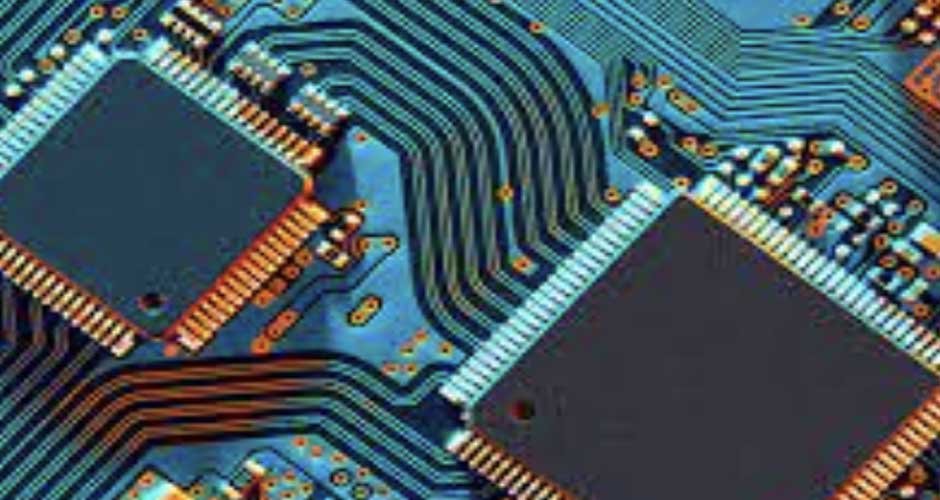The future of VLSI (Very Large Scale Integration) and chip design is set to be transformative, driven by advances in technology and increasing demands for higher performance and energy efficiency. As we move towards smaller and more complex chip architectures, trends such as 3D stacking, nanotechnology, and AI-driven design automation are becoming crucial. Additionally, the rise of IoT, 5G, and edge computing is pushing the boundaries of traditional chip design, requiring innovative solutions to meet the growing need for faster, more efficient, and scalable electronics. These trends are poised to shape the next generation of semiconductor technology.
Table of Contents
Introduction to Vlsi and chip design
VLSI (Very Large Scale Integration) and chip design are fundamental aspects of modern electronics, playing a crucial role in the development of complex integrated circuits that power everything from smartphones to supercomputers. VLSI involves the process of integrating thousands to millions of transistors onto a single chip, enabling the creation of highly sophisticated and compact electronic devices. Chip design, on the other hand, focuses on the architecture and functionality of these integrated circuits, ensuring they meet specific performance, power, and area requirements.
As technology keeps on advancing, the demand for skilled professionals in VLSI and chip design is growing rapidly. Pursuing a VLSI course will help in recieving the required knowledge and skills to excel in this dynamic field. Such a course covers key aspects of VLSI design, including circuit design, fabrication processes, and testing methodologies, preparing students to tackle the challenges of developing cutting-edge semiconductor technologies that drive innovation in the tech industry.
Current Research Areas in VLSI Design and Technology
Current research areas in VLSI design and technology are focused on addressing the challenges of scaling, power efficiency, and performance in modern integrated circuits.
One major area is 3D IC (Integrated Circuit) design, which involves stacking multiple layers of circuits vertically to enhance performance and reduce footprint. Nanotechnology is another key focus, with research exploring the use of materials like carbon nanotubes and graphene to create smaller, faster, and more efficient transistors.
Low-power VLSI design is also a critical area, aiming to reduce power consumption in devices, especially for applications in mobile and IoT (Internet of Things) devices. AI-driven design automation is emerging as a transformative approach, by using machine learning algorithms to optimize the design process, from synthesis to layout. Additionally, quantum computing is an exciting frontier, where researchers are investigating the potential of quantum bits (qubits) to revolutionize processing power and efficiency in VLSI technology. These areas are driving the next generation of semiconductor innovation.
Emerging Technologies in VLSI, Chip Design and Technology
Here are some emerging technologies in VLSI, chip design, and technology:
- 3D Integrated Circuits (3D ICs):
Stacks multiple layers of circuits to enhance performance and reduce chip size.
Improves power efficiency and bandwidth.
- Nanotechnology:
Utilizes materials like carbon nanotubes and graphene for smaller, faster transistors.
Aims to overcome the limitations of traditional silicon-based technology.
- FinFET and GAAFET Transistors:
Advanced transistor designs that offer better control and reduced leakage.
Enable continued scaling of semiconductor devices.
- Quantum Computing:
Explores the use of quantum bits (qubits) for unprecedented processing power.
Could revolutionize VLSI design by enabling faster, more efficient computation.
- AI-Driven Design Automation:
Uses machine learning to optimize the design process, from synthesis to layout.
Speeds up the development cycle and improves design accuracy.
- Neuromorphic Computing:
Mimics the human brain’s neural networks to improve processing speed and efficiency.
Focuses on low-power, high-performance computing solutions.
- Flexible and Wearable Electronics:
Integrates VLSI technology into flexible substrates for wearable devices.
Expands the applications of chip design to new, innovative products.
These emerging technologies are pushing the boundaries of what’s possible in VLSI and chip design, enabling the development of more powerful, efficient, and versatile electronic devices.
VLSI Application & Trends in 2024
- In 2024, VLSI (Very Large Scale Integration) technology continues to be at the forefront of electronics innovations, with applications expanding across various industries. One major trend is the increasing demand for 5G and beyond. VLSI is crucial in designing the high-speed, low-latency chips required for next-generation wireless communication, enabling faster data transfer and more reliable connectivity.
- Another significant application is in Artificial Intelligence (AI) and **Machine Learning (ML), where VLSI is driving the development of specialized processors like GPUs and TPUs, optimized for handling AI workloads efficiently. This trend supports advancements in autonomous systems, smart devices, and data centers.
- Internet of Things (IoT) continues to grow, with VLSI enabling the creation of ultra-low-power, compact chips for sensors and devices that require minimal energy. These advancements are essential for the proliferation of smart homes, cities, and industrial IoT applications.
- Automotive electronics is another area where VLSI plays a key role, particularly in the development of chips for autonomous driving, advanced driver-assistance systems (ADAS), and in-vehicle infotainment systems.
- Lastly, sustainability is becoming a critical focus, with VLSI trends moving towards energy-efficient designs and eco-friendly materials, addressing the environmental impact of semiconductor manufacturing and operation.
- These trends indicate a robust and evolving VLSI landscape, driving innovation across multiple sectors in 2024.
Conclusion
In conclusion, the future of VLSI and chip design is poised to bring transformative changes to the technology landscape. With the advent of 3D ICs, nanotechnology, AI-driven design automation, and quantum computing, we are on the brink of developing smaller, faster, and more efficient chips that will power the next generation of devices and applications. As these trends continue to evolve, the demand for skilled professionals in this field will only increase. Pursuing a chip design course will be essential for those looking to stay at the forefront of this dynamic industry, equipping them with the knowledge and skills needed to contribute to these cutting-edge advancements and drive future innovations.



